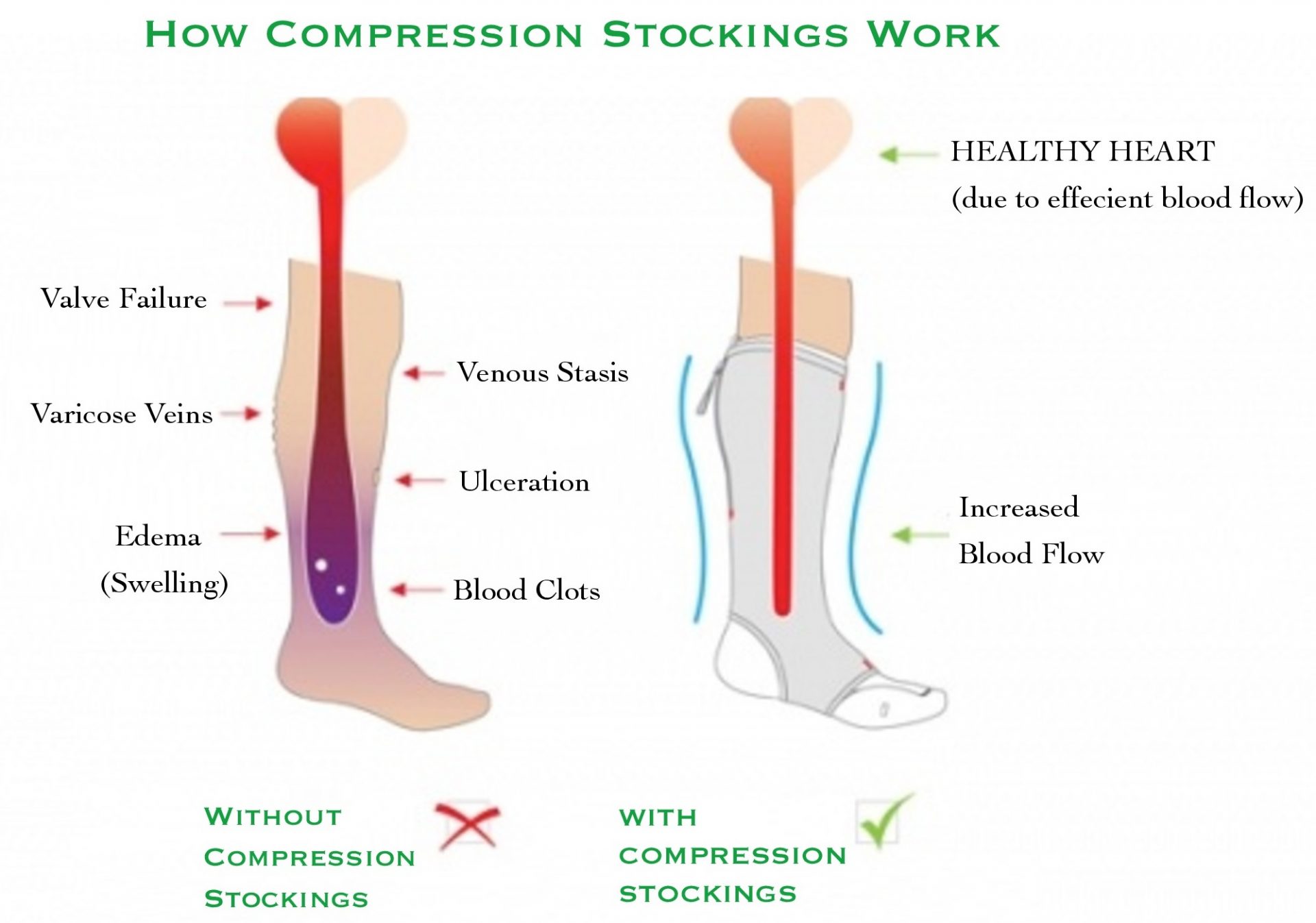Do your feet seem to sweat more than others? Do they regularly carry an unpleasant…
Compression Socks and Stockings
Compression socks and stockings are specially designed garments worn on your legs, ankles and feet to improve circulation, manage swelling, and reduce discomfort associated with various venous conditions. They apply gentle pressure to your legs, helping your veins function more effectively and preventing common vein-related problems.
Understanding Common Venous Conditions
- Oedema (oedema) is swelling caused by excess fluid trapped in your body’s tissues. You might notice puffiness or swelling, particularly around your ankles and feet.
- Phlebitis is inflammation of the veins, often causing discomfort, redness, and warmth in the affected area.
- Thrombosis refers to blood clots forming in your veins, potentially dangerous if left untreated, as clots can travel and cause serious medical issues.

How Do Compression Socks and Stockings Work?
Compression socks and stockings work by applying graduated pressure to your legs. They’re tightest at the ankles, gradually becoming less restrictive as they move up towards your knees and thighs. This design encourages blood flow back towards your heart, preventing blood from pooling in your lower legs and feet. As a result, they improve circulation, reduce swelling, and alleviate feelings of heaviness and aching.
Benefits of Wearing Compression Socks and Stockings
- Improve circulation: by enhancing blood flow, they help maintain healthy veins and arteries.
- Reduce your risk of blood clots. This is particularly beneficial after surgery or during extended periods of immobility, such as long-haul flights.
- Help alleviate swelling and discomfort: ideal for pregnancy-related swelling, prolonged standing or sitting, and post-sport recovery.
- Help manage varicose veins and spider veins: regularly using compression garments can help prevent these veins from developing or worsening.

Compression Levels and Options
Compression socks and stockings come in different compression strengths, measured in millimetres of mercury (mmHg):
- Mild compression (10-15 mmHg) is suitable for general leg fatigue, mild swelling, or as preventative wear during travel.
- Moderate compression (15-20 mmHg) is generally helpful for mild to moderate swelling, pregnancy, varicose vein prevention, and exercise recovery.
- Higher compression (20-30 mmHg and above) these come from a medical professional or pharmacy. They are recommended for more serious conditions, such as severe oedema, post-surgical recovery, or to manage diagnosed venous diseases.
At Masterton Foot Clinic, we offer compression socks and stockings to help our patients with:
- Travel – reducing the risk of blood clots and swelling on long journeys.
- Pregnancy – helping minimise leg swelling and prevent varicose or spider veins from developing.
- Post-exercise recovery – helping reduce muscle soreness, enhance recovery, and protect against rashes and chafing.
- Post-surgical recovery – helping protect against deep vein thrombosis (DVT), particularly after lower limb surgeries.
When Should You Avoid Compression Wear?
While beneficial for many, compression socks and stockings aren’t suitable for everyone. You should avoid wearing them if you have:
- Severe peripheral arterial disease (ischemia).
- Uncontrolled congestive heart failure.
- Untreated skin infections or septic phlebitis.
- Skin conditions with open sores or weeping dermatoses.
- Known allergies or sensitivities to the stocking material.
- Significant loss of feeling or sensitivity in your limbs.
If you’re considering compression therapy or want advice on the best option for your specific needs, our experienced podiatrists at Masterton Foot Clinic are here to help. We’ll guide you through choosing the most effective and comfortable compression wear, helping support you in staying healthy, comfortable, and with minimal pain and discomfort.
